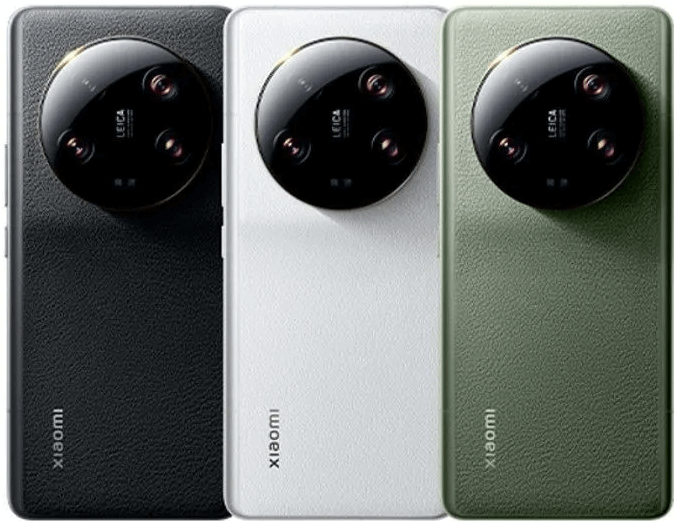Xiaomi is preparing for the global launch of its new flagship Xiaomi 14 Ultra smartphone. Xiaomi 13 is an excellent phone, but v14 promises to bring a series of improvements that will provide to be a good rival for iPhone. Everyone seems to believe that Xiaomi 14 Ultra will be officially presented at the Mobile World Congress (MWC) on February 25th, so we’ll soon find out its exact specs.

Xiaomi has not officially confirmed the launch date of Xiaomi 14 Ultra, but thanks to a few leaks we have some ideas about its price and specifications. According to information, Xiaomi 14 Ultra could have the same launch price as its predecessor, so around $1,600.
Xiaomi 14 Ultra will be available with three storage options: 12GB RAM with 256GB storage space / 16GB RAM with 512GB storage space and 16GB RAM with 1TB storage space.
Xiaomi 14 Ultra Rumored Specs
Xiaomi 14 Ultra will have a 6.73-inch AMOLED LTPO QHD+ display, with a refresh rate of 120Hz promising a vibrant and immersive visual experience. Like the other models in the 14 series, Xiaomi 14 Ultra will be equipped with the Qualcomm Snapdragon 8 Gen 3 SoC chipset, known for its top performance.
Xiaomi 14 Ultra will run on HyperOS, based on Android 14, offering a multitude of customization options. The camera is one of the many strengths of Xiaomi 14 Ultra. The phone is expected to be equipped with a 50-megapixel 1-inch primary sensor, a 50-megapixel ultra-wide sensor, and a 50MP telephoto sensor with 5X optical zoom, plus a 32-megapixel front camera for selfies.
Xiaomi 14 Ultra will be powered by an impressive 5,300mAh battery. An interesting novelty is the titanium variant for Xiaomi 14 Ultra, inspired by Apple, which will be available exclusively for the 16GB/1TB configuration and will cost more than the standard version.
According to GSM Arena, these might be a few of Xiaomi 14 Ultra’s specifications:
- Build: Glass front (Gorilla Glass Victus 2), eco leather back, aluminum frame
- IP68 dust/water resistant (up to 1.5m for 30 min)
- Display: LTPO AMOLED, 1B colors, 120Hz, Dolby Vision, HDR10+
- Size: 6.73 inches, 109.4 cm2
- Resolution: 1440 x 3200 pixels, 20:9 ratio (~521 ppi density)
- Chipset: Qualcomm SM8650-AB Snapdragon 8 Gen 3 (4 nm)
- CPU: Octa-core (1×3.3 GHz Cortex-X4 & 3×3.2 GHz Cortex-A720 & 2×3.0 GHz Cortex-A720 & 2×2.3 GHz Cortex-A520)
- MEMORY: 256GB 12GB RAM, 256GB 16GB RAM, 512GB 16GB RAM, 1TB 16GB RAM
- MAIN CAMERA: Quad 50 MP, f/1.6 or f/4.0, 23mm (wide), 1.0″-type, 1.6µm, multi-directional PDAF, Laser AF, OIS
- 2nd CAMERA: 50 MP, f/1.8, 75mm (telephoto), 1/2.51″, Dual-Pixel PDAF, OIS, 3.2x optical zoom
- 3rd CAMERA:50 MP, f/1.8, 12mm, 122˚ (ultrawide), 1/2.51″, Dual-Pixel PDAF
- 4th CAMERA: 32 MP selfie-camera
- Features: Leica lenses, Dual-LED flash, HDR, panorama, 67mm filter ring holder (optional)
- Video: 8K@24fps, 4K@24/30/60fps, 1080p@30/60/120/240/480/960/1920fps, gyro-EIS, Dolby Vision HDR 10-bit rec. (4K@60fps, 1080p)
- BATTERY: Type 5300 mAh, non-removable
Every now and then Samsung, Xiaomi and other manufacturers release state-of-art smartphones that are marketed as iPhone killers. But the truth is that no one will kill the iPhone (maybe it’ll do it by itself), because those that buy iPhones get them for the whole combo of design/performance, not for the specs themselves.
There are already a lot of Android smartphones that beat any iPhone in terms of technical specifications, but it’s not going to matter for Apple enthusiasts. Users like to be consistent with their preferences, so once you go iPhone, you rarely go back.
